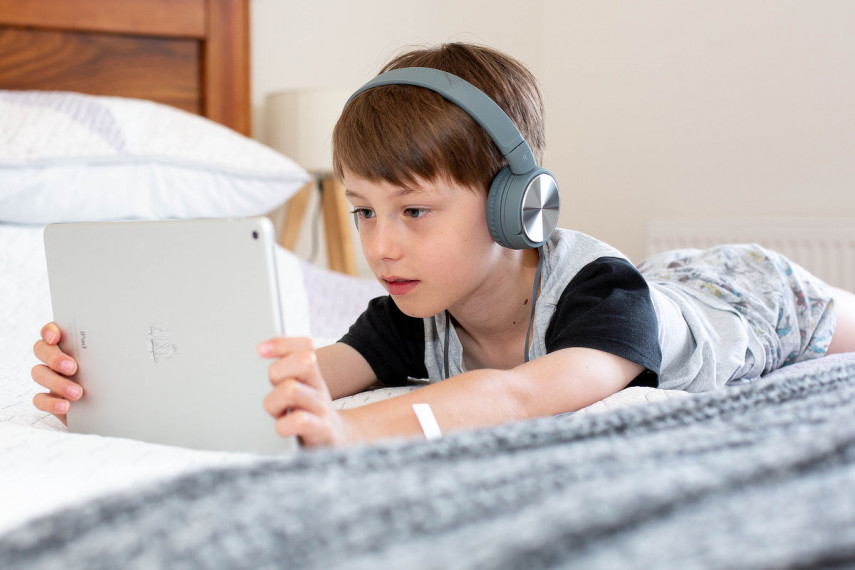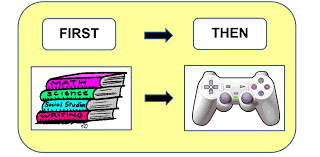How to Increase Your Child's Engagement in Non-Preferred Tasks

The Premack Principle is used to increase the likelihood of your child engaging in non-preferred tasks by using preferred items as motivation. For instance, if your child enjoys playing video games but dislikes grammar questions, you may permit them to play video games only if they first complete the questions.
FIRST: A challenging task or something undesirable
THEN: An activity or item that your child really wants

The Premack Principle is often referred to as “grandma’s rule” because grandmothers or caregivers typically use this strategy; for example, first eat your vegetables, then you can have cake. If your child does not complete the non-preferred task, they cannot receive the item or activity that they desire as the Premack principle is a rule-based intervention. Your child must complete the first task to receive the second item or activity. If your child protests or whines, repeat the instruction (First-Then). You do not want to get into a power struggle such as:
Parent: Eat your peas.
Child: No!
Parent: If you don’t eat your peas, you can’t have any cake.
However, if your child does cooperate after protesting, you can reward them for engaging in the appropriate behaviour.
When using First-Then, it is important to ensure your rule:
- Is within your child’s abilities
- Is easy to understand
- Is specific when describing behaviour (i.e. complete three math equations)
First-Then Rule is helpful:
- When you want to increase the likelihood of your child engaging in a non-preferred task
- To increase general cooperation with your child
First-Then Visual Board
- Can also be used as a reminder for what your child is working for (i.e., what they will be rewarded with after completing the required task)
These are examples of the Premack Principle:
- If you do your homework from 3 to 4 P.M., then you can watch TV.
- First finish this math equation, then five minutes on the iPad.
- First brush your teeth then we’ll read a story.
- First put your shoes on then we’ll go outside.